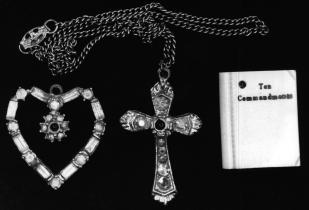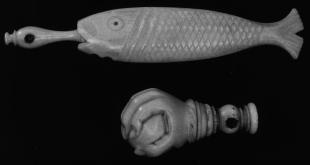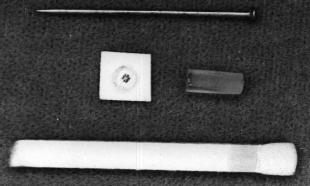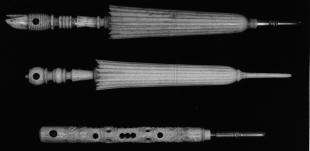 |
 |
| This enlarged photo shows a ivory fish with a Stanhope in its mouth containing a photo of Wm F. Cody, Buffalo Bill a very excellent piece. Also a carved ivory hand holding a ball used as a letter seal which contains 6 tiny scenic French pictures in the Stanhope. |
 |
| This enlargement made to show the relative size of a straight pin and a common paper match as against the size of the Stanhope lens and the little micro-dot of a photo shown in the center of the white square. |
 |
| Enlarged photos of two umbrella needle cases one includes a pencil on the end, is bone and contains a picture of "Saltburn". The other is ivory and contains a "risque" picture. The bone pencil shows a photo of the St. Louis exposition. |
 |









